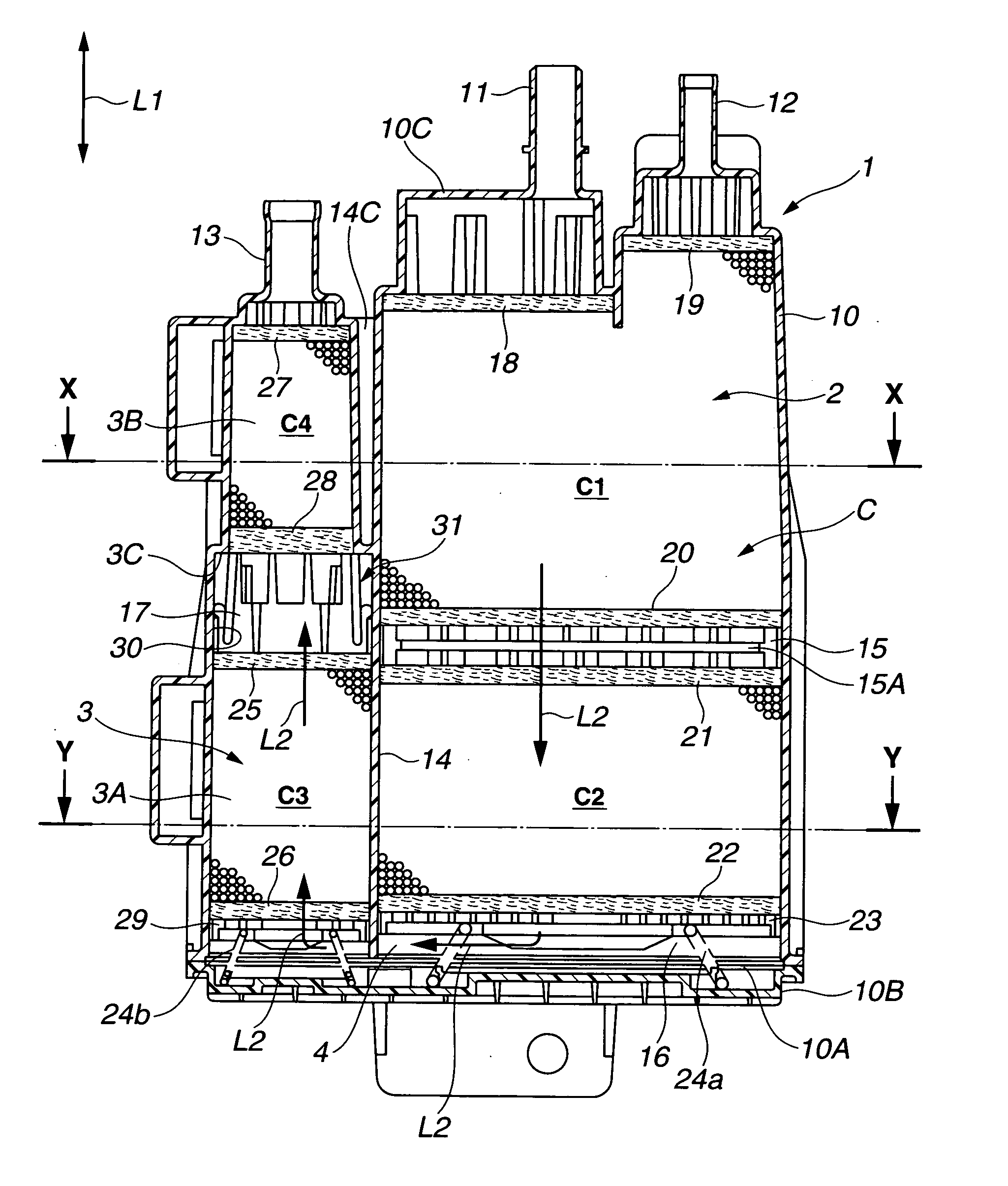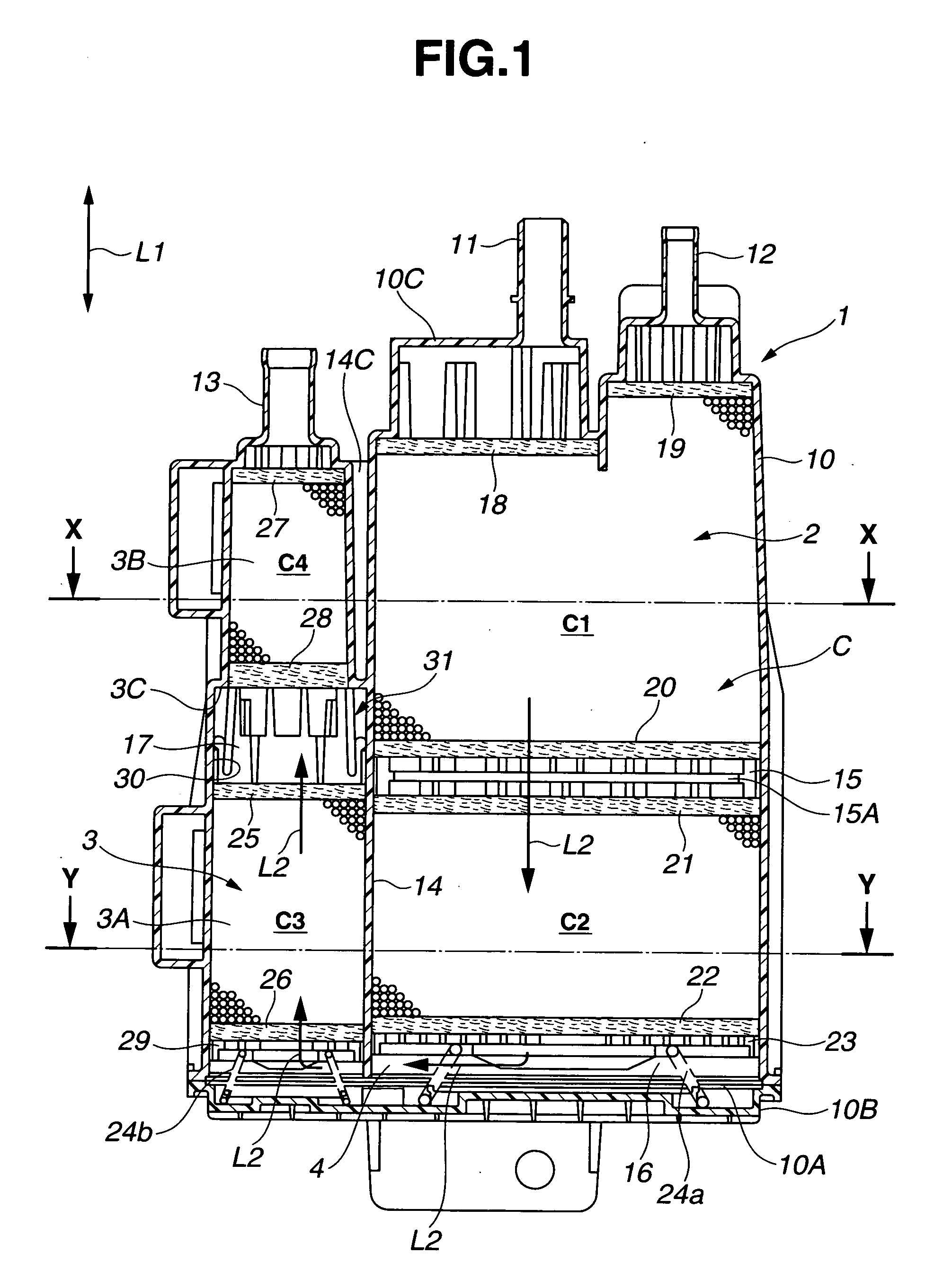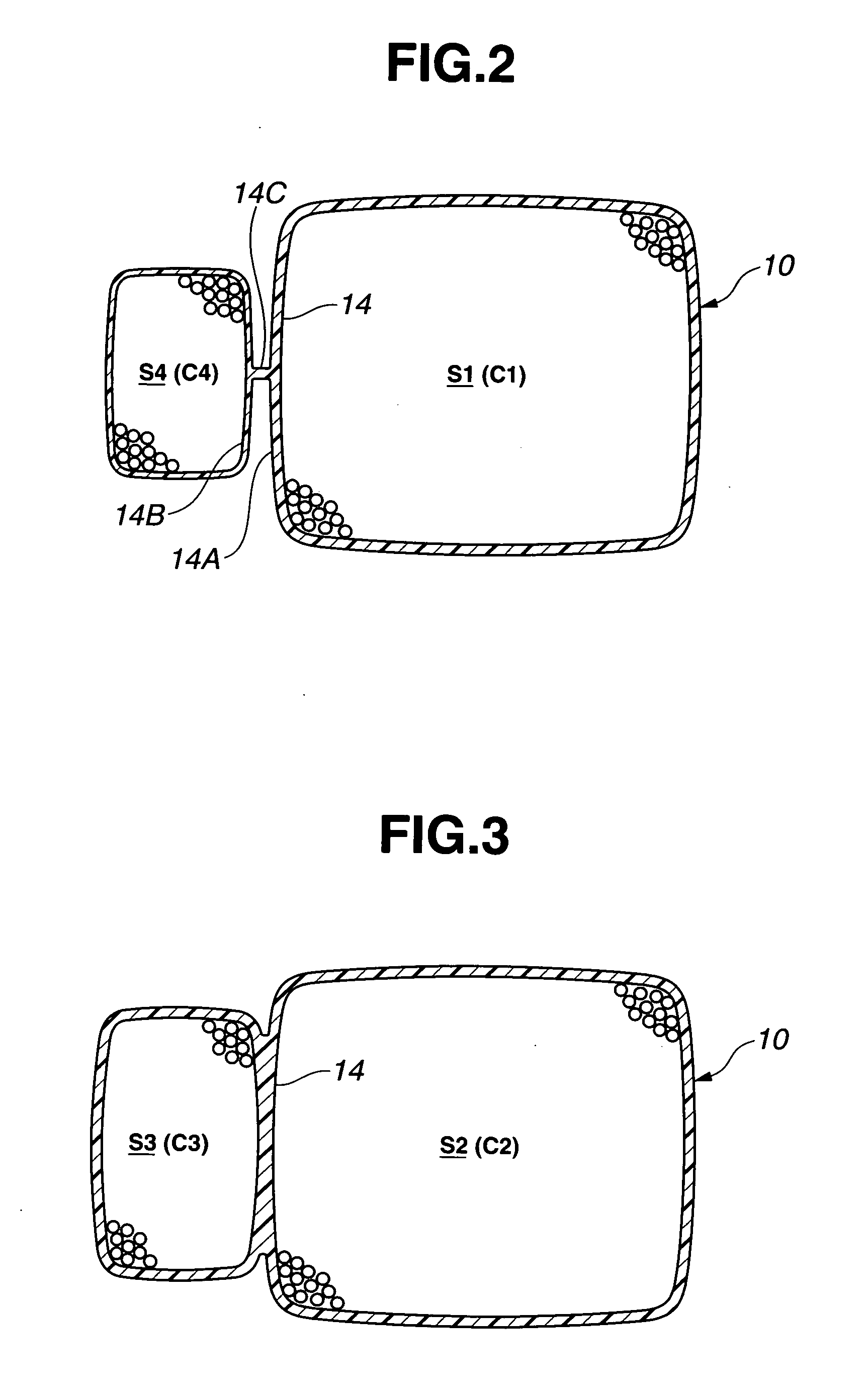Fuel vapor storage canister
a technology of fuel vapor and canisters, which is applied in the direction of machines/engines, combustion air/fuel air treatment, separation processes, etc., can solve the problems of increasing the length and volume of the gas passage in the adsorption layer, the inability to reduce or cancel the temperature change during the fuel vapor adsorption and desorption, and the increase of the cross-sectional area and the length of the gas passage. , to achieve the effect of reducing the purging efficiency
- Summary
- Abstract
- Description
- Claims
- Application Information
AI Technical Summary
Benefits of technology
Problems solved by technology
Method used
Image
Examples
Embodiment Construction
[0015] Referring now to FIGS. 1, 2 and 3 of the drawings, an embodiment of a fuel vapor storage canister according to the present invention is illustrated. The canister comprises a casing 1 as a main body, formed of a resin material or plastic. The casing 1 includes a generally cup-shaped casing main body 10, and a plate-shaped bottom lid section 10B which is joined and fixed to the end face of an open end section 10A of the casing main body 10 in such a manner as to close the open end section 10A formed opening at one end in a longitudinal or vertical direction L1 of the casing 1 (i.e., a vertical direction in FIG. 1, or a direction in which a port wall section 10C discussed after and the bottom lid section 10B face each other). The casing main body 10 has the port wall section 10C which is opposite to the open end section 10A. The port wall section 10C is formed with a charge port 11 which is connected to a fuel tank through a piping (not shown), a purge port 12 which is connected...
PUM
 Login to View More
Login to View More Abstract
Description
Claims
Application Information
 Login to View More
Login to View More - R&D
- Intellectual Property
- Life Sciences
- Materials
- Tech Scout
- Unparalleled Data Quality
- Higher Quality Content
- 60% Fewer Hallucinations
Browse by: Latest US Patents, China's latest patents, Technical Efficacy Thesaurus, Application Domain, Technology Topic, Popular Technical Reports.
© 2025 PatSnap. All rights reserved.Legal|Privacy policy|Modern Slavery Act Transparency Statement|Sitemap|About US| Contact US: help@patsnap.com



